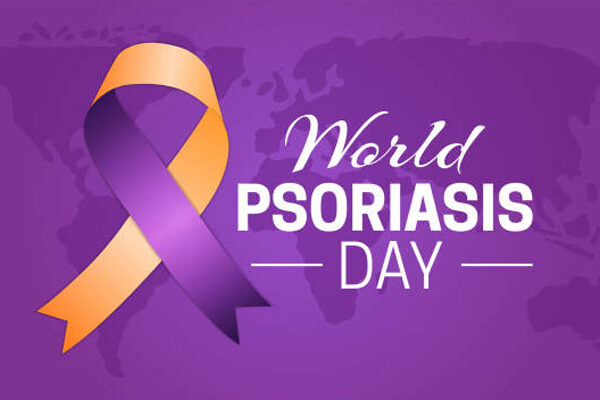Updated on May 25, 2023
Subacute Cutaneous Lupus Erythematosus vs Other Subtypes: Overview
Systemic lupus erythematosus is the most common form of lupus disease. It is a chronic autoimmune disease affecting the skin and various other parts of the body, including joints, kidneys, and other organs. Symptoms of swelling, soreness, and rash are the clinical presentations commonly associated with lupus.
Cutaneous lupus erythematosus is a subtype of systemic lupus. It is divided into three subtypes discoid lupus erythematosus (DLE), subacute cutaneous lupus erythematosus (SCLE), and lupus erythematosus tumidus (LET). Put simply, the majority of cutaneous lupus symptoms arise in response to sun exposure. To aid the treatment, multiple clinical research organizations are conducting cutaneous lupus clinical trials investigating potential alternatives to heal the skin.
Learn all you need to know about acute vs subacute cutaneous lupus erythematosus: what it is, symptoms, and treatment as you continue down the read.
Incidence of Lupus
To determine the risk of incidence, medical researchers look into the genetic makeup of an individual that plays an essential role in the onset of lupus and other medical conditions. According to demographics:
- It is more common in women than men and typically affects adults between 20 and 50 years
- While African Americans are more likely to develop discoid lupus rash than Caucasians, subacute cutaneous lupus erythematosus patients show the opposite trend, with 85% of Caucasians
Also read: Discoid lupus
Subacute Cutaneous Lupus Erythematosus: What is it, Symptoms & Treatment?
Sub-acute cutaneous lupus erythematosus is a chronic autoimmune disease that elicits an inflammatory reaction in various body parts, primarily the skin. Approximately 85% of the individuals systemically taken up by lupus involve cutaneous manifestations at some point. Generally, sub-acute cutaneous lupus appears as a mild version of non-scarring skin lupus that affects more than just facial skin. It typically appears as a red, painful, itchy, scaly rash on sun-exposed areas such as the face, upper chest, neck, arms, and upper torso. In many instances, the skin may heal but with skin discoloration.
Symptoms typical of sub-acute cutaneous lupus erythematosus other than skin rash include:
- Complain of joint pain and stiffness
- Fatigue that may affect daily life
- Experiencing low-grade fever occasionally
- Extreme photo-sensitivity
It is important to note that the symptoms of SCLE can vary from person to person, and some people may not experience all the symptoms listed above.
Is Subacute Cutaneous Lupus Erythematosus Dangerous?
From what is recorded in individuals, lupus is mainly the result of immunity and genetic component. Therefore, the condition is not contagious, but not managing the condition with therapies can prove to be life-threatening. This is why the symptoms need to be addressed through treatment. Patients who avoid the sun may experience vitamin D deficiencies. Rarely can cutaneous lupus erythematosus affect a wide bodily surface area, causing considerable discomfort and potentially lowering the quality of life. On the contrary, systemic cutaneous lupus might also affect crucial organs and lead to other potential complications.
What Causes Sub-acute Cutaneous Lupus Erythematosus?
Subacute cutaneous lupus and cutaneous lupus erythematous are two different types of skin lupus affecting millions of people worldwide. It is often triggered in response to certain medications, infections, or ultraviolet light. While the exact cause of the condition is unknown, it is majorly the result of genetic and environmental influences. Subacute cutaneous lupus erythematosus can also be associated with other autoimmune diseases such as Sjögren’s syndrome, rheumatoid arthritis, and Crohn’s. Its diagnosis depends on the complexity of symptoms, physical examination, and blood tests that look for specific autoantibodies.
Acute vs Sub-acute Cutaneous Lupus Erythematosus
Acute cutaneous lupus is characterized by the sudden onset of a rash that typically appears on the face, neck, and scalp. It usually appears as a flat, red, and itchy rash after prolonged sun exposure. Occasionally, a rash may appear on other body parts, such as the arms and legs. Subacute cutaneous lupus erythematosus, on the other hand, typically presents as a rash less severe than the rash associated with acute cutaneous lupus. It may be a sign of systemic lupus, a more serious form of lupus that affects multiple organs and systems in the body, but it can also develop on its own. Lesions associated with this form of lupus aren’t always itchy or painful and rarely cause scarring after they heal.
While both forms of lupus affect the skin, acute cutaneous lupus tends to be more severe and may require more aggressive treatment than subacute cutaneous lupus erythematosus. A butterfly pattern malar rash on the cheeks and nose, triggered in response to sun exposure, is a typical feature indicative of acute cutaneous lupus. On the other hand, ring-shaped red patches with scaly borders and lighter centers in sun-exposed areas are presentations commonly associated with subacute cutaneous lupus. Raised red rings might overlap to form concentric rings, similar to those in psoriasis. Therefore, the characteristic rash pattern might act as a discerning factor between the two cutaneous conditions.
Differential Diagnosis
Skin conditions involving cutaneous manifestations similar to that experienced in subacute cutaneous lupus erythematosus are:
- Psoriasis
- Tinea corporis
- Nummular eczema
- Dermatomyositis
- Pityriasis rubra pilaris
- Sarcoidosis
- Cutaneous T-cell lymphoma
- Drug eruptions
Viable Treatment Options
The goal of treatment to subside subacute cutaneous lupus erythematosus symptoms involves a combination of medications and lifestyle modifications. To manage the symptoms, prevent flares, and reduce the risk of long-term complications, the following are some of the commonly advised tips:
- Administer drugs to suppress the immune system, including antimalarials, or immunosuppressants
- Protect the skin from the sun using broad-spectrum sunscreens (SPF 30+) and protective clothing
- Avoid sun exposure during peak hours
- Topical creams and ointments containing corticosteroids to relieve skin rashes and inflammation
- NSAIDs to relieve joint pain and other symptoms that come along with subacute cutaneous lupus erythematosus
- Eat a balanced diet
- Get regular exercise
- Avoid smoking and excessive alcohol consumption
With proper strategy, most people with SCLE can manage their symptoms regardless of the causative factor.
Outlook
Every case of subacute cutaneous lupus erythematosus and cutaneous lupus depends on the severity of the symptoms. In general, cutaneous lupus has a good prognosis and can often be managed easily with appropriate treatment. Unfortunately, despite timely treatment, the condition can recur or progress to systemic lupus erythematosus (SLE). However, with close monitoring and an appropriate management approach, many people with subacute cutaneous can control their symptoms and prevent complications. In addition to standard medications, widespread treatment approaches to mitigate lupus symptoms are actively being investigated through clinical trials.






